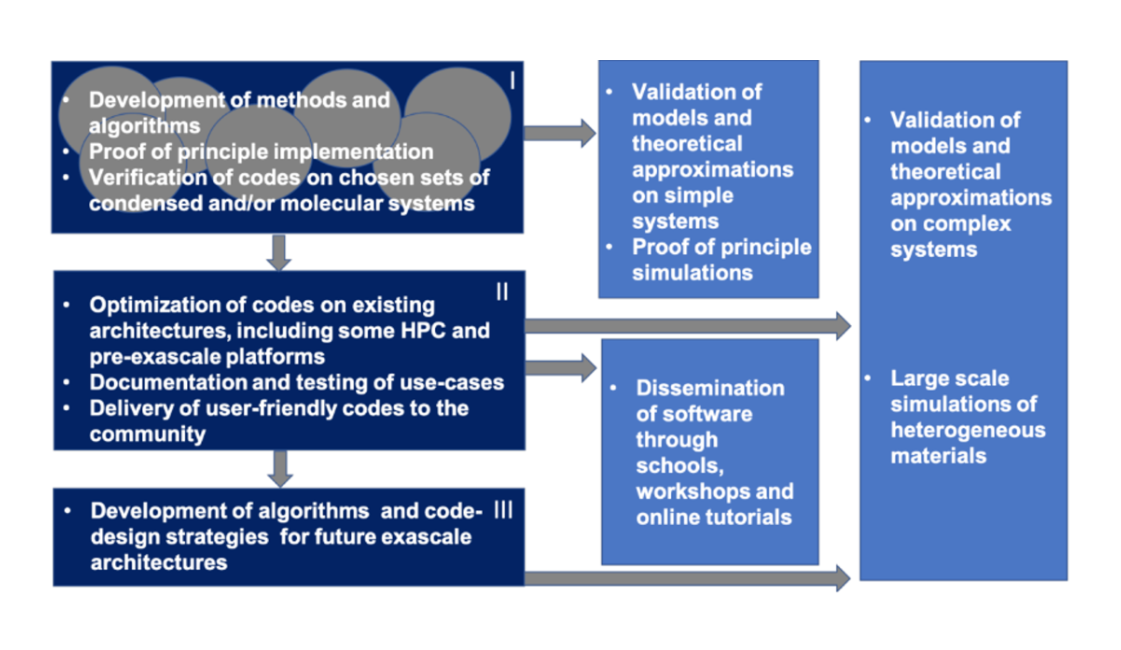Research Overview
We develop tools and strategies to unravel structure-function relationships in complex materials and identify design rules which may be used in experiments. We primarily target materials for the realization of quantum technologies and low power electronics devices. The former is an area with potential impact in designing qubits, quantum sensors, and materials for quantum communications; the latter is an area with potential, long term impact on semiconductor manufacturing and microelectronics. The codes and strategies developed by MICCoM are general and flexible enough to be applicable to broader classes of problems, for example materials for energy storage and energy conversion.
Three-step strategy of MICCoM: develop & verify, optimize & deliver, prepare for exascale

V&V and Benchmarking
The main activities are benchmarking and validation of electronic structure results for ground and excited states, validation of optical spectra of spin-defects and validation of FPMD simulations of interfaces.
Data
Dissemination of searchable data (collections and publication notebooks)